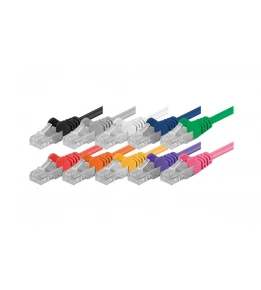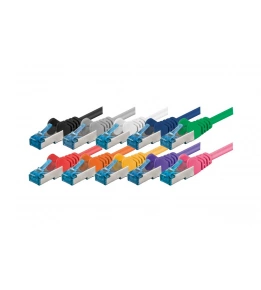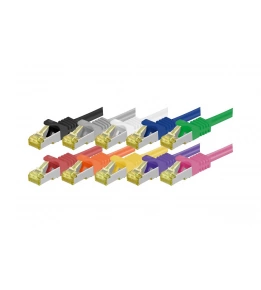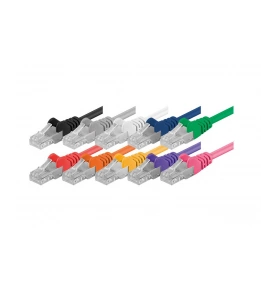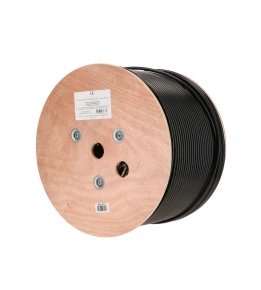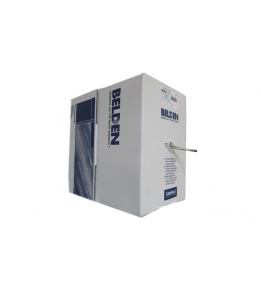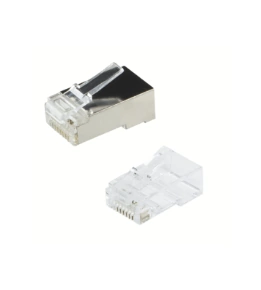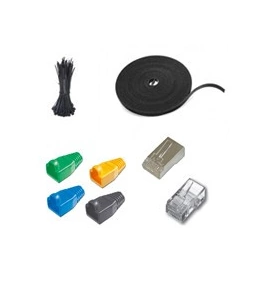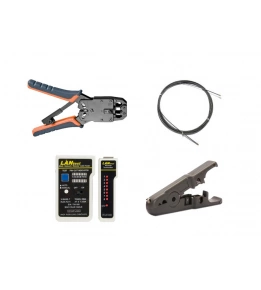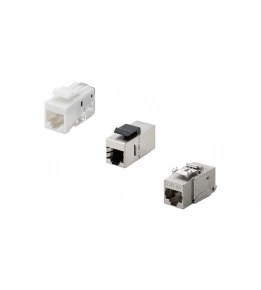UTP cabling
A UTP cable is a network cable used to establish an internet connection. There are four types of UTP cables available: CAT5e, CAT6, CAT6a, and CAT7. The difference lies in the speed and throughput of the cabling. Read more about each category and the types of shielding available so you can make the right cable purchase. Need assistance in choosing a network cable? Read this knowledge center article: Choosing the right cable
Buying UTP Cable
Different Types of UTP Cables
To ensure you purchase the right UTP cable, we've provided an overview of the capacities of various cables.
-
CAT5e Cable: This is the older standard UTP cable. While still widely used, it is becoming less suitable for current user needs. It can reach speeds of up to 1,000 megabits per second with throughput speeds of 100 megahertz.
-
CAT6 Cable: The current standard network cable, capable of achieving speeds up to 1,000 megabits per second like the CAT5e cable. However, the CAT6 cable can transmit more data simultaneously, with a throughput speed of 250 megahertz.
-
CAT6a Cable: A newer internet cable suitable for 10-Gigabit networks, capable of transmitting data at speeds up to 10,000 megabits per second, 10 times faster than CAT5e and CAT6 cables. It has a throughput speed of 500 megahertz, making it ideal for use with fiber optics.
-
CAT7 Cable: Capable of transmitting data at speeds of 10,000 megabits per second with a throughput speed of 600 megahertz. CAT7 cables have strict specifications against crosstalk and noise, making them one of the most powerful network cables on the market, suitable for use with fiber optics like CAT6a.
Difference Between UTP and FTP Cables
The primary difference between UTP and FTP cables is that FTP cables have an additional protective foil wrapped around each twisted pair of copper wires. This gives FTP cables better protection against electromagnetic interference (EMI) compared to UTP cables, which lack this foil.
UTP Cables for Offices and Home Networks
In a UTP cable, the twisted pairs of copper wires are directly surrounded by a common sheath, providing less protection. UTP cables are commonly used in offices and home networks where the cables are not exposed to significant external interferences.
FTP Cables Resistant to External Influences
FTP cables are often used in environments where cables are exposed to many external interferences, such as near electrical equipment, motors, and lighting. The extra protective foil in an FTP cable ensures a stable and fast connection regardless of other installation cables.
If you are setting up a new network at home, you can also opt for Shielded/Foiled Twisted Pair cables. An S/FTP cable offers even more protection against interference due to its outer shell having a metal shielding layer. This guarantees fast and stable internet over longer distances.
Avoid Placing UTP Cables Next to Power Cables
Prevent UTP cables from being near other power cables, as UTP cables are unshielded and can cause interference when close to other cables.
If this cannot be avoided, choose a shielded network cable. A shielded cable reduces the risk of interference due to the shielding within the cable.
Click here to order the Danicom cable on a roll - shielded.
Cabling for Server Environments
For use in professional server environments, (double) shielded cabling is always recommended to protect all data traffic from interference caused by power cabling.
Use Shielded Accessories
When using shielded internet cables, it's important to use shielded accessories such as shielded wall mount boxes, connectors, patch panels, keystones, etc.
The Right Internet Cable for Every Connection
An internet cable is available in many different variants. Each variant can be used to set up a network. On one hand, there is an internet cable, available in various lengths, with RJ45 connectors at both ends, also called a patch cable. The cable only needs to be connected to establish a connection.
Additionally, there are so-called internet cables on rolls, also called installation cables. These internet cables do not have pre-mounted plugs and are therefore suitable for laying through the wall or floor. Once the installation cable is laid, either RJ45 connectors need to be mounted, or the internet cable needs to be connected to an LSA strip.
LSZH or PVC Cable Sheath
LSZH and PVC are abbreviations applied to cable sheath materials.
- LSZH = Low Smoke Zero Halogen
- PVC = Polyvinyl Chloride
An internet cable with an LSZH sheath is halogen-free. LSZH designation is applied to cables constructed from materials without halogens, such as thermoplastic. This material is also used for LEGO bricks and Teflon. LSZH cables result in much less smoke and do not emit gases, making them better for human health and the environment. To determine whether the cable has a PVC or halogen-free sheath, check the concise specifications of the product.

